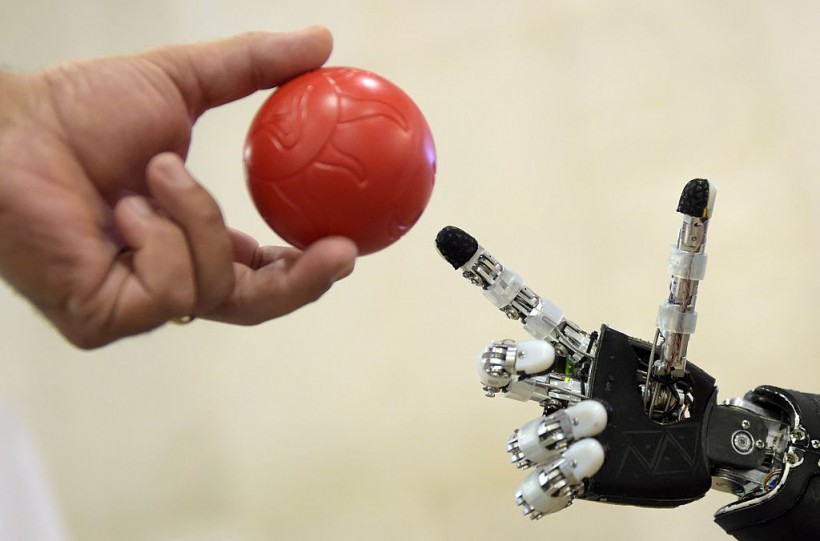For the first time ever, a group of scientists from the Italian Institute of Technology has created a new class of highly effective artificial muscles that can stretch and contract like human muscles. More importantly, it can lift 1000 times its own weight!

A man approaches a plastic ball toward the finger of humanoid robot iCub during the 2014 IEEE-RAS International Conference on Humanoid Robots in Madrid on November 18, 2014. The iCub is the humanoid robot developed at IIT (Instituto Italiano di Tecnologia) as part of the EU project RobotCub and subsequently adopted by more than 20 laboratories worldwide. It has 53 motors that move the head, arms & hands, waist, and legs.
Versatile and Graceful Muscles
The muscles work with a degree of versatility and grace that is closely suited to lifelike movements. They support the development of three-dimensional functional devices like artificial body parts, as reported first by Interesting Engineering.
The robot's artificial muscles are commonly known as actuators or Geometric-based Actuators that Contract and Elongate (GRACE). Due to its pneumatic nature, GRACE can raise to a thousand times its own weight by using gas or compressed air.
The design also supports a novel degree of flexibility thanks to its new mathematical model. When pressure is placed on the various actuator muscles, the robot hand can bend its fingers and mimic human gestures, even though such resins were formerly relatively stiff, according to Interesting Engineering.
GRACE is a 3D-printed resin object, but what makes it unique is that it has a pleated design. Accordingly, energy is subsequently transformed into movement when the muscles are inflated with gas.
Hence, the resulting stretching and contraction give the fully three-dimensional objects printed with them remarkable strength and flexibility!
Read also: Roboticists Developed an AI Program That May Have Discovered an 'Alternative Physics'
Capabilities of Actuators
Some actuators may be able to lift relatively heavy objects, depending on the material used to manufacture the actuator and the thickness of the material. One 8-gram actuator successfully lifted 8 kilograms when put to the test, according to New Scientist.
Additionally, the actuators can be assembled to resemble real muscles and body components. The researchers connected 18 actuators of various sizes to create a robotic hand with a wrist.
The hand can also rotate at the wrist and bend its fingers by applying pressure to the various actuator membranes.
According to Jonathan Aitken of the University of Sheffield in the UK, GRACE's innovative and intriguing design makes it simple to operate antagonistically.
Aitken considers the choice of flexible resin for the actuator, which provides a wider range of motion than the stiffer resins employed up to now, to be one of the unique features of the robot. But Aitken claims that this flexible resin could yet be improved in the future.
Related Article: Creepy Dead Robots? Scientists Are Transforming Dead Spiders Into 'Necrobots'
This article is owned by Tech Times
Written by Joaquin Victor Tacla









